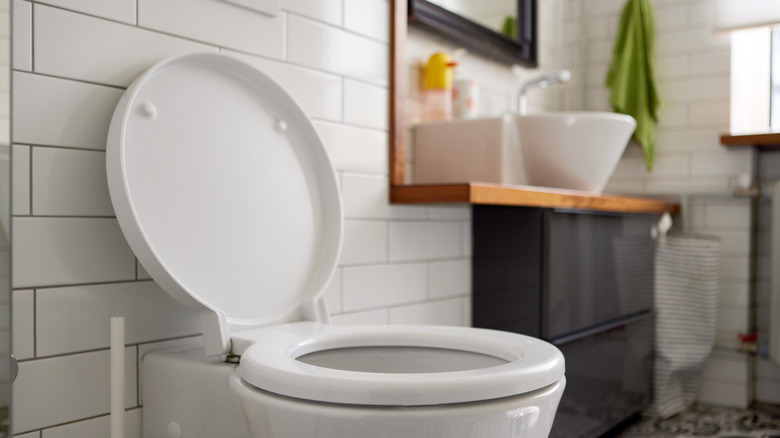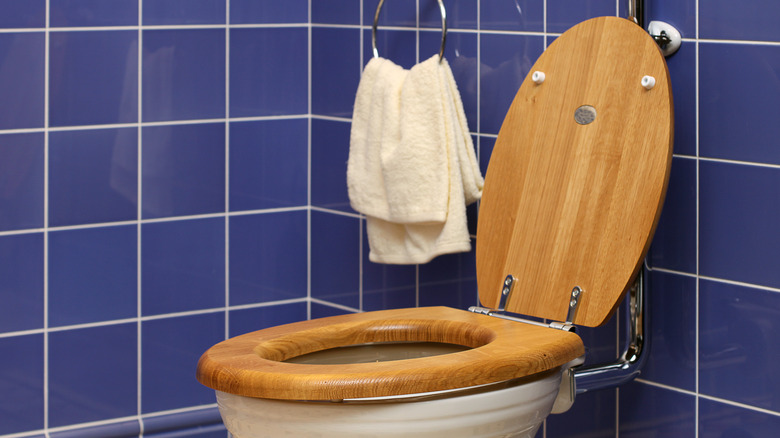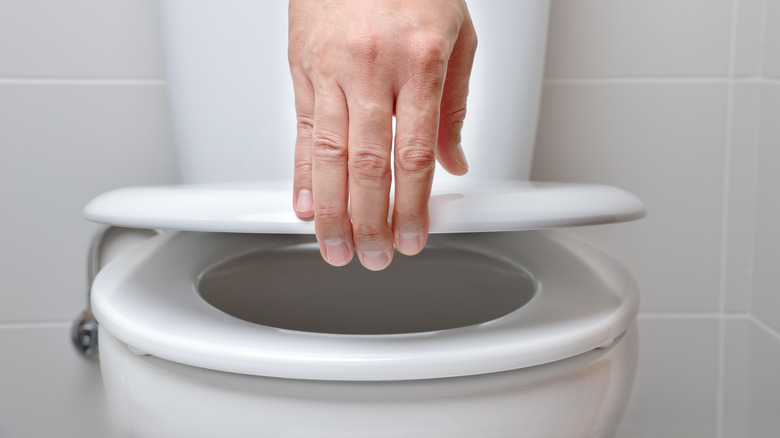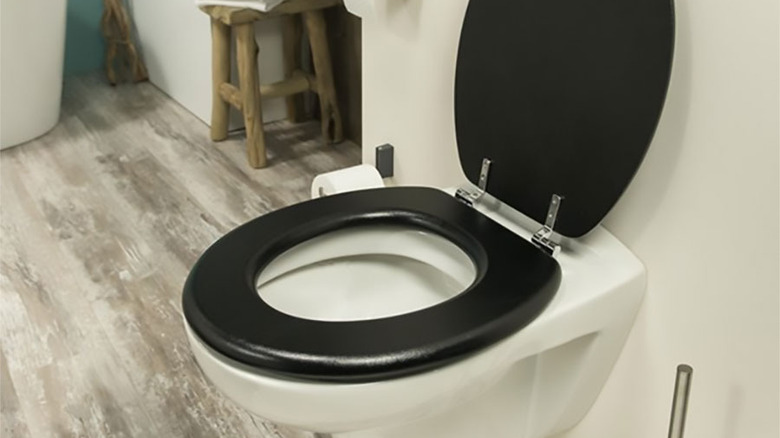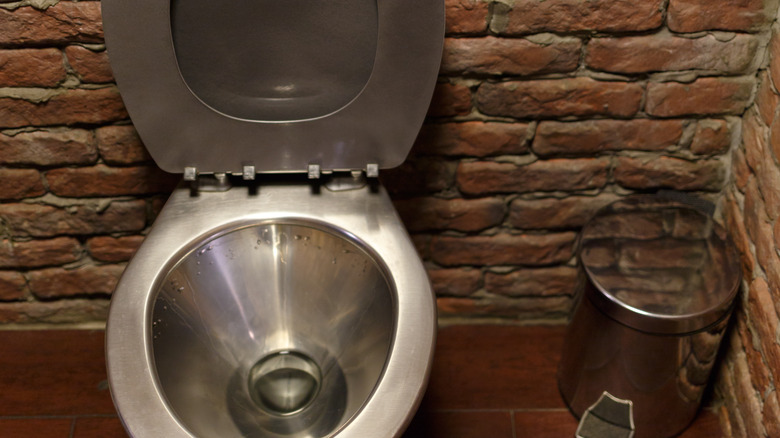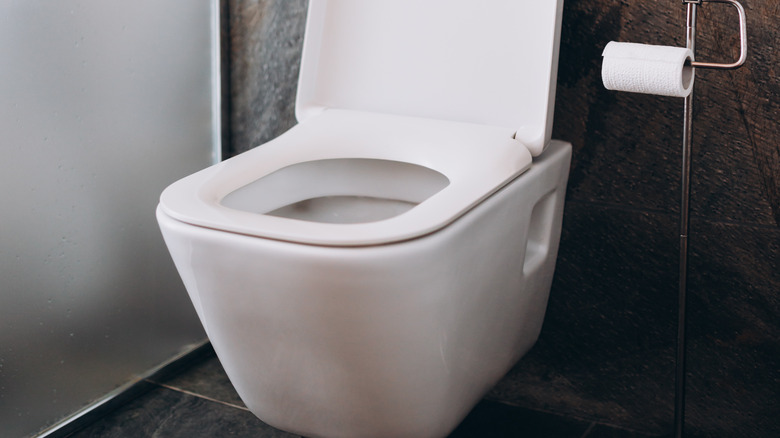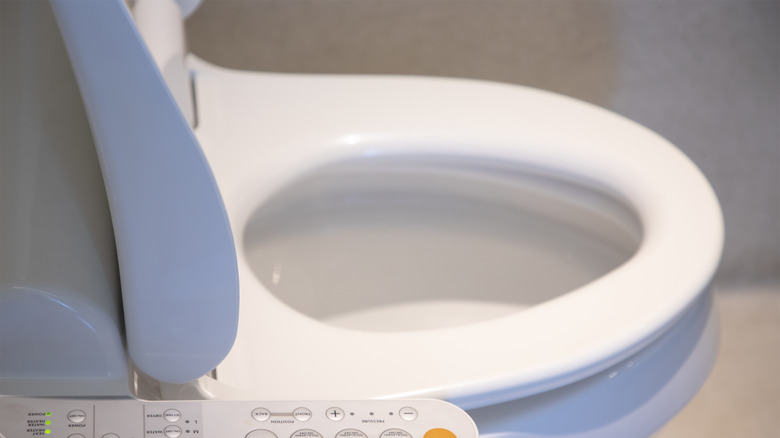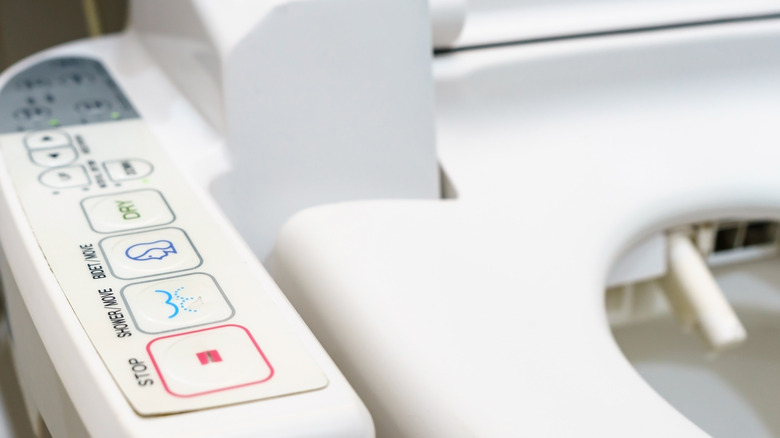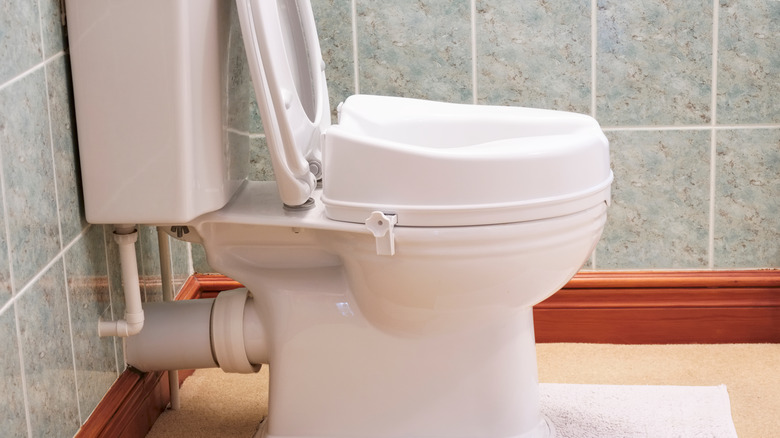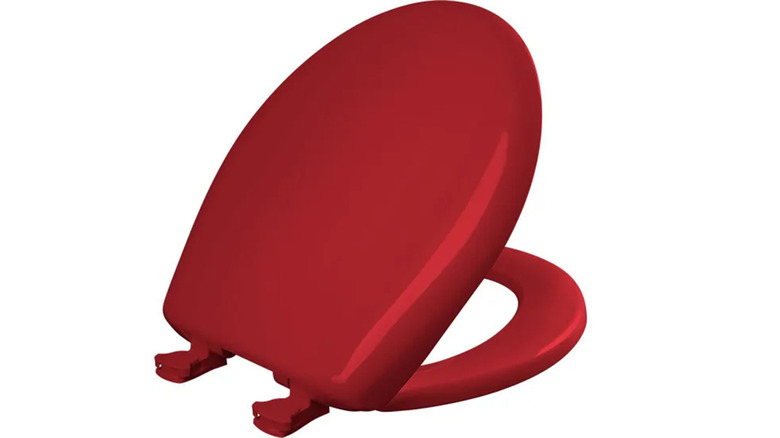Ditch Your Basic Plastic Toilet Seat & Try These Unique Alternatives Instead
We may receive a commission on purchases made from links.
Toilet seats are the workhorses of the bathroom, and their contribution to the comforts of home is often underappreciated. This is why cheap, basic plastic seats are so ubiquitous and few folks care about upgrading to a different seat type. But. despite their thankless job, toilet seats can do so much more than provide a comfortable interface between bum and bowl — if you choose them wisely, they can also contribute to the design of the bathroom. Some offer more advanced options that can also elevate the toilet-going experience to new heights of luxury. These range from giving you a warmer surface to sit on to comprehensive solutions that clean you, dry you, and keep you warm all in one.
Alternatives to plastic toilet seats include wood (natural and enameled), leather, metal, ultra-thin, heated, bidet, and raised seats. Each of these seat types brings unique aesthetics and functionality to your bathroom. Below, we explore each of these types, along with their advantages and drawbacks.
Wooden toilet seats add a touch of nature and warmth to the bathroom
Wood toilet seats provide a more natural-looking alternative to plastic. Instead of blending in with the white decor used in most bathrooms like plastic seats do, wood seats immediately attract attention with their warm, earthy brown tones. And the warmth they radiate isn't only aesthetic. If you've never sat on a wooden toilet seat before, you'll be surprised at how warm they feel compared to their plastic counterparts — especially on a cold winter morning. The science behind this phenomenon is simple. Most species of wood have a lower thermal conductivity than polypropylene, the material used in cheap plastic toilet seats. Materials with a lower thermal conductivity transfer heat — in this case, from your bum — slower than those with a higher value. Your skin takes a longer time to lose heat, and as a result, the surface you're touching (or rather, sitting on) feels warmer.
However, wood toilet seats come with a few minor drawbacks. The first is that you need to clean these toilet seats often enough and maintain them properly to keep mold outbreaks at bay. Likewise, using traditional toilet cleaning products and disinfectants isn't recommended for wood toilet seats, as they can cause discoloration. Instead, only faucet cleaner should be used to wipe these seats. Another downside is that, while the seat may look great on the online retailer's website or on the store shelf, you may find that it stands out too much when you install it in your bathroom. It's a highly subjective aesthetic decision, and some may find the contrast more to their liking than others.
Enameled wood toilet seats marry the warmth of wood with plastic's ease of cleaning
Enameled wood toilet seats (also known as "molded wood toilet seats") are made from compressed wood dust and resin that's finished with a coat of paint. These seats marry the warmth of wooden seats with the ease of cleaning of their plastic counterparts, thanks to their paint finish. Apart from the warmth, enameled wood toilet seats also feel heavier, a sensation that you may associate with higher quality when you compare it to a cheap, lightweight plastic seat. If you buy your molded wood toilet seat from a reputable manufacturer, you'll find that it's robust enough to resist scratches and cracks with use. Some of the top-tier brands also equip their molded wood seats with removable hinges that enable you to take the seat off the bowl easily for cleaning.
One issue with molded wood toilet seats is the durability of the paint finish and the compressed wood dust. If you end up with an inexpensive, lower-quality model, you may notice that the seat deteriorates over time. The degradation is typically caused by exposure to water, chemicals in the commercial cleaners you use, and the acid in urine, all of which eat away at the paint layer and eventually expose the compressed wood beneath. Losing the paint finish may seem like a minor enough flaw, but wear and tear may get the better of the engineered wood core after a while, too, and cause it to chip or crack.
Leather toilet seats imbue the bathroom with a rustic, Western charm
If you're into all things Western or just love the look of leather, there's no better way to create a unique atmosphere than by fitting out your throne with a leather toilet seat. These seats are not fully leather — they typically comprise a wooden seat, a lid with cow's hide upholstering on it, and an ornate design on the latter. This model from Your Western Decor is an excellent, cowboy-worthy example. Very few retailers have them for sale, so these toilet seats are as unique as toilet seats can get. Having a wooden base, this type of seat offers the same advantages any wooden seat does — namely, the warmth.
That said, the wood and leather components of this seat type demand a good deal of specialized care. For one, you'll have to clean the wooden parts of the seat and lid thoroughly to prevent mold growth, all the while ensuring that the cleaners don't damage the material. Likewise, the leather bits need some tough yet gentle love on a regular basis. You'll have to treat the seat the way you would any leather-upholstered piece of furniture, wiping it often with an appropriate cleaning solution, then using leather care and protection products to keep the material looking its best. Another downside to leather-upholstered toilet seats is their hefty price tag. The seats' novelty, scarcity, and the high cost of constituent materials easily drive the price tag well north of $250 per seat. That's a significant investment, considering you can get an oak seat for just $35 at Home Depot.
Stainless steel toilet seats are durable and easy to clean
Toilet seats made of metal are commonly used in institutional and commercial settings, but nothing precludes you from installing one at home. Despite their industrial appearance, metal toilet seats come with several unique advantages. Most crucially, stainless steel is a highly hygienic material because it's non-porous, and pathogens are easy to wipe away. What's more, stainless steel's chemical inertness means that it doesn't react to various chemicals, such as those you'll find in bathroom cleaners. This means you have a wide assortment of commercial cleaners you can use on this type of seat. Finally, stainless steel seats stand up pretty well to wear that stems from use or cleaning.
However, there are a few drawbacks that may keep you from fitting out your toilet with a stainless steel seat. First, consider the comfort. Stainless steel seats can get quite cold on a chilly day. If you compare the thermal conductivity of common toilet seat materials, you'll find that stainless steel is high on the list, with a value of 14.3 W/m K — that's 50 times higher than polypropylene and 100 times higher than oak. This means your behind will lose heat (leaving you feeling cold) 50 and 100 times faster on a stainless steel toilet seat than it would had you been sitting on a plastic or wooden equivalent, respectively. Imagine that on a dreary winter Monday morning! Also stainless steel dents easily. If you have kids wreaking havoc around the house, you'll have to learn how to fix dents in stainless steel to keep the seat looking new.
Ultra-thin toilet seats offer contemporary aesthetics and come loaded with convenient features
As their name suggests, these seats are quite slim — often as thin as ⁹⁄₁₆ of an inch. They're designed to check many boxes, the first of which is a sleek, contemporary design. Apart from mere looks, ultra-thin toilet seats are meant to ensure a close connection to the toilet bowl and thus a less wobbly sitting experience. Some ultra-slim toilet seats, like this TOTO model from Bath Butler Bidets ($208.50), come with advanced features, such as soft close and quick release. The soft close function prevents the seat or lid from slamming down on the bowl when you close it, while the quick release hinge system enables you to take the seat off effortlessly for cleaning. These detachable toilet seats are your secret to having a squeaky-clean toilet.
One major disadvantage of ultra-slim seats is the price — you can expect to pay $200 or more for a seat like this. Another drawback worth noting is the seats' limited compatibility with toilets. For example, the TOTO seat we mentioned above only works with five toilet models. So, before you order one of these seats, make sure that it can be installed on the toilet you have at home. A better option may be to visit a brick-and-mortar store and speak with an associate who can recommend a compatible ultra-slim seat.
Heated toilet seats are your best friend on a cold winter morning
Wooden seats feel less cold to the touch than their plastic or steel cousins. However, they do not actually produce heat. So, if you're dreaming about a toasty start to the day on a chilly morning, both wood and plastic will disappoint you to an extent.
Enter heated toilet seats. These plastic seats come with an integral, insulated electric heating element that generates warmth in response to your control inputs. You can control the heating element via a sidearm console that's usually mounted on the side of the seat, although some heated seat controls are smartphone-compatible. The heat is the obvious advantage of these seats, but some also come with more complex features, like a night light, odor control, and bidet.
Heated toilet seats are not without their weak points. The price may be an obstacle if you're on a budget. Lower-end heated seats range in price between $120 and $150, whereas the more advanced, "smart" models with bidets can easily set you back a few thousand dollars. So, you'll have to decide whether a heated toilet seat is worth the money for you. Installation may also be challenging for inexperienced DIYers. While many heated seats simply plug into an outlet, others need to be properly hardwired. Finally, these seats may pose a hazard if you have kids or pets in the house.
Bidet toilet seats are the pinnacle of modern comfort
A bidet toilet seat is a type of device that integrates a bidet washer into a toilet seat. Instead of wiping with toilet paper, bidet seats squirt water to wash your behind once you're done going to the bathroom. This cleaning method is much gentler than using toilet paper, which can cause irritation. They're also convenient for people whose limited range of motion makes wiping difficult. Of course, bidets also help to save money on toilet paper and keep your hands cleaner. And since bidet seats generally come with seat warmers, they're a nice luxury to have on chilly days.
A step up from heated toilet seats, bidets are generally quite expensive. The cheaper, less complex models start at around $300, and typically include several water cleansing and air drying options, along with a heated seat. On the other hand, a feature-packed seat like this one from TOTO costs over $2,000 but offers instantaneous water heating, automatic lid opening and closing, a front cleansing option, and other advanced functions.
Even if the price is not an issue, you may struggle to install the bidet in your bathroom. The installation process involves connecting the water supply line, and in some cases, you'll need to hook up a valve to get a supply of warm water. If you don't feel comfortable tinkering around with your home's plumbing, this task may not be for you. Finally, bidets pose a health hazard to people assigned female at birth. That's because an incorrectly aimed water stream can disrupt the bacterial ecosystem inside the vagina and cause urinary tract infections.
Raised toilet seats making getting up and sitting down easier
A raised toilet seat is taller than a standard seat, so that the surface you sit on is farther from the toilet bowl. This configuration means that you have less of a distance to cover as you sit down or get up from the toilet. The shorter distance to the seat is easier to cover with weakened muscles, and leads to a lesser risk of suffering an accidental fall. Crucially, the process of sitting down or standing up from such a seat exerts less pressure on the joints. For seniors, people with disabilities, or those with joint problems, raised toilet seats make the task of going to the bathroom a little bit easier.
A major drawback of a raised toilet seat is that its use can induce constipation. Squatting is the best position for effortless bowel movements. When we squat, our rectal muscles relax, and gravity helps us expel fecal matter quickly. On the other hand, trying to poop with your knees at an obtuse angle tightens the pelvic floor and makes the task more challenging. Raised toilet seats are also not a great option if you have kids in the house, as they'll struggle to get on and off without a stepping stool.
Bemis is a great place to explore unique toilet seat colors
Bemis is a century-old toilet seat manufacturer with an incredible assortment of different seat types. At Bemis, you'll find elongated and round seats that are plastic, molded wood, wood finish, and more. Intriguingly, Bemis has a lovely selection of toilet seat colors. So, whether you prefer a seat that's molded wood, plastic, or soft, you should be able to find your color of choice in the company's catalog. Colors available online include several shades of blue, red, pink, gray, white, green, yellow, brown, and black.
The only minor drawback to Bemis seats is the price, as most models cost upwards of $100. These pricier seats come with an array of premium features. These include soft closing, easy hinge removal for cleaning, and a tight fit that's never supposed to loosen on the bowl no matter the amount of bum-wiggling it undergoes. That said, you can still get a regular toilet seat in a color of your choice for as little as $11 if you don't mind forgoing the fancier features like quick-release and soft-close.
